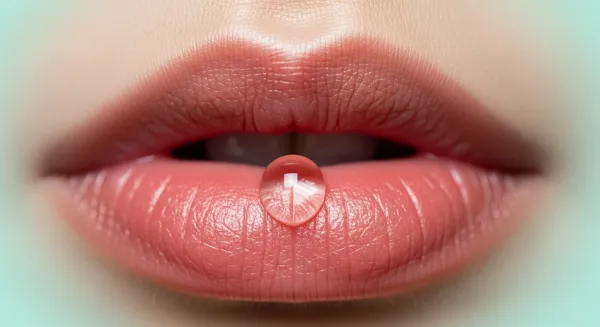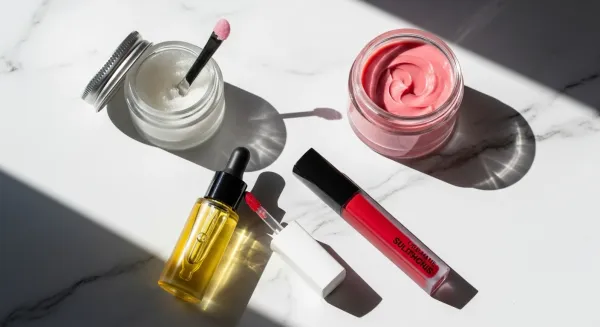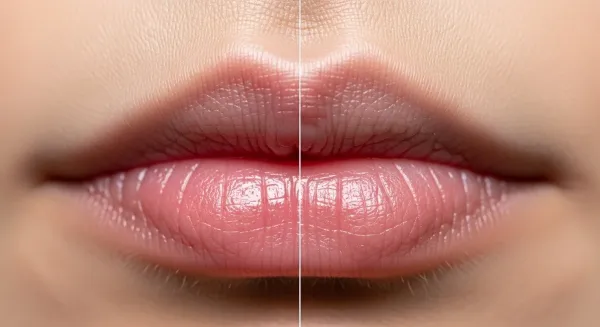How to Get Rid of Lines Around Your Mouth: The No-BS Guide That Actually Works
Tired of lines around your mouth? Discover how to reduce them with our complete guide on skincare, topicals, and expert-approved clinical treatments.
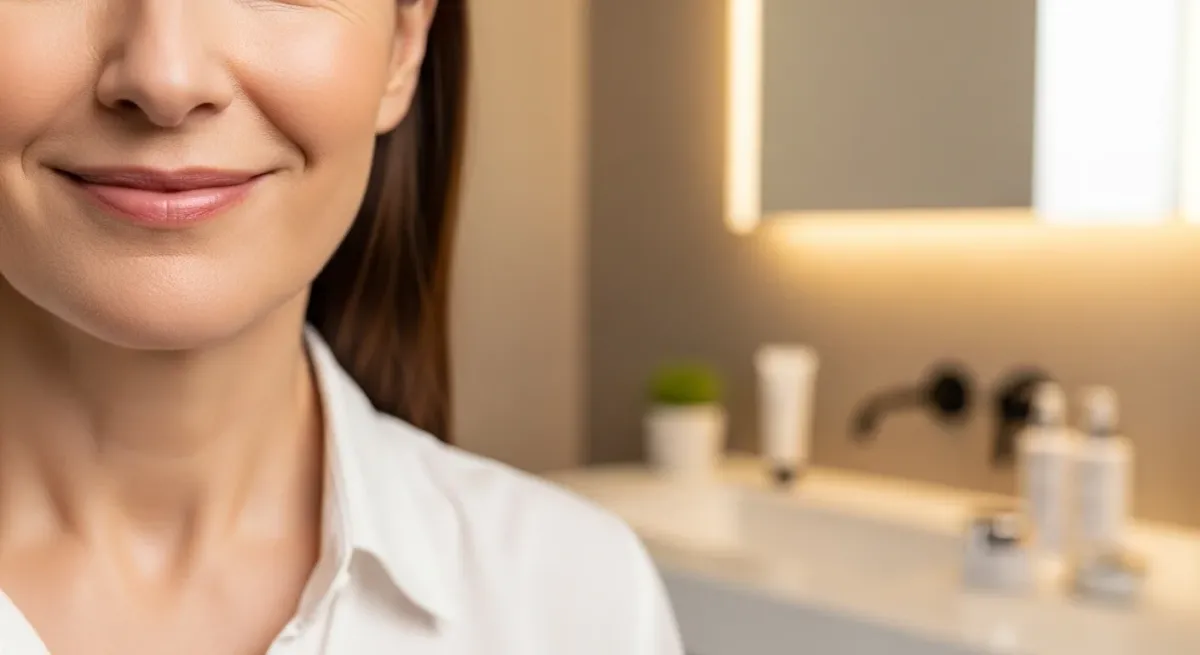
Look, I'm going to be straight with you.
Those fine lines creeping around your mouth? They're not going away with a $15 miracle cream from Target. But here's the good news: you don't have to live with them either.
Lines Around Your Mouth — Quick Playbook
TL;DR (Grade 8)
Lines come from sun, motion, volume loss, and dryness
- Three types: lip lines ("smoker’s"), nasolabial folds, and marionette lines.
- Quick wins: hydrate skin, SPF daily, stop licking lips and straw overuse.
- Big levers: retinoids at night, vitamin C by day, consistent moisture.
- Habits: less sun, less smoking/vaping, less face picking.
- Pro help: microneedling, lasers, neuromodulators, fillers—pick based on line type.
- Reality: creams smooth; procedures reshape. Use both for best results.
- Timeline: skin care 8–12 weeks; procedures 1–4 sessions.
- Budget rule: fix habits first, then actives, then devices, then injectables.
- Test: smile, pucker, relax. If line fades when relaxed → muscle. If not → volume/skin.
- Don’t chase fast hacks. Chase systems you can keep doing.
The problem is that most articles on this topic give you the same recycled garbage. They list 47 different treatments without telling you which ones actually work, how much they cost, or how long you'll wait to see results.
That ends today.
I'm about to break down everything you need to know about reducing fine lines around your mouth—from the cheap stuff that works to the expensive procedures that are worth every penny. No fluff. No BS. Just the truth about what works, what doesn't, and how much you'll actually pay.
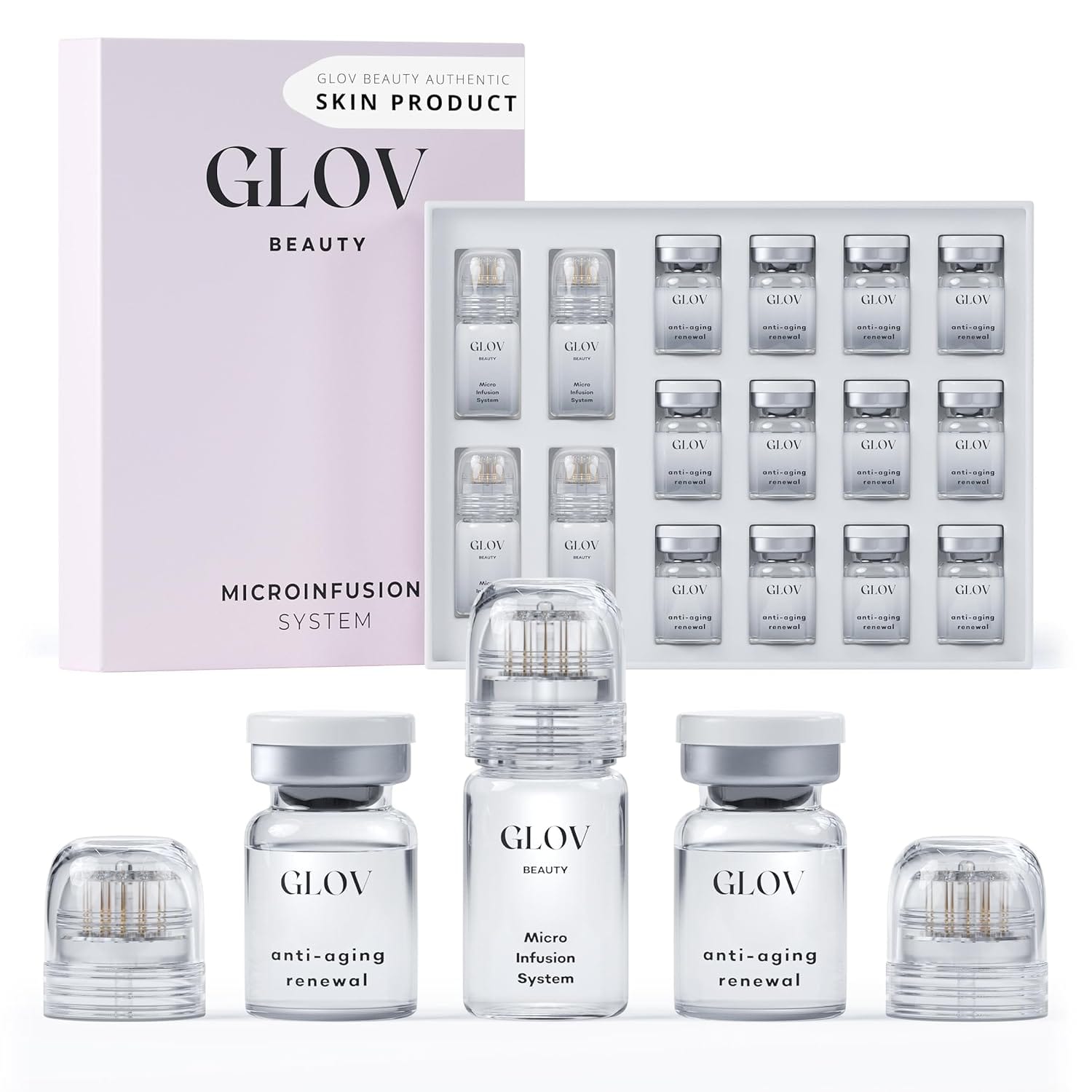
Glov Beauty Micro Infusion System for Face & Lips
Cosmetic Facial Stamp with Hyaluronic Acid, Collagen Peptides & Licorice Root Serum Ampoules | At-Home Hydrating & Plumping Glow Kit
*Affiliate link - No extra costs for you
Let's get into it.
First, Let's Talk About What You're Actually Dealing With
Before we throw solutions at you, you need to understand what type of lines you have. Because treating vertical lip lines is completely different from treating smile lines.
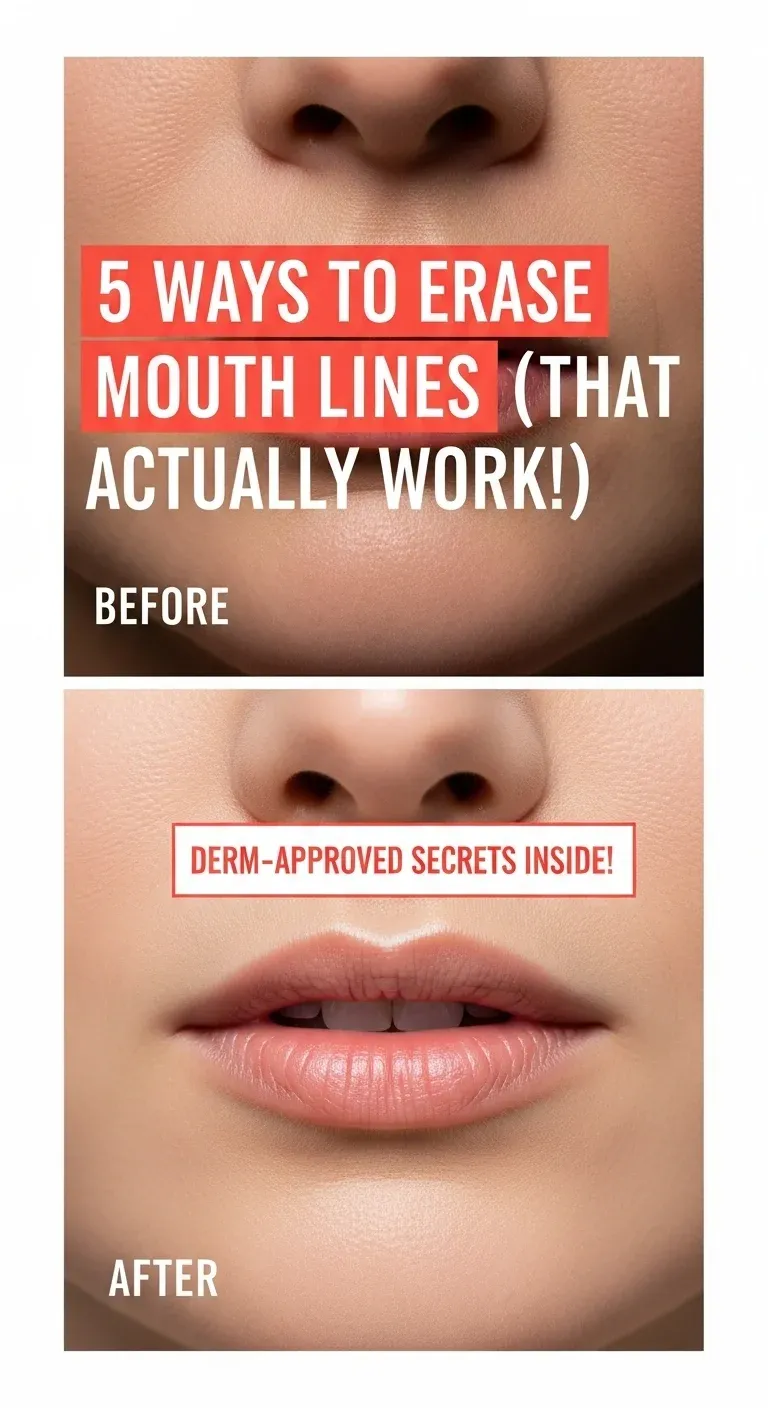
Here are the three main types:
Nasolabial Folds (Smile Lines): These run from the sides of your nose down to the corners of your mouth. They're the deep grooves that get more pronounced when you smile.
Marionette Lines: These drop straight down from the corners of your mouth toward your chin. They're called marionette lines because they make you look like a puppet (harsh, but accurate).
Perioral Wrinkles (Smoker's Lines): These are the fine vertical lines that appear above your upper lip. You don't have to be a smoker to get them, but smoking definitely makes them worse.
Why does this matter? Because a filler that works miracles for nasolabial folds might do absolutely nothing for those vertical lip lines. Understanding what you're dealing with is step one.
Why You Have These Lines (And Why Blaming "Aging" Isn't Enough)
These lines don't just appear because you're getting older. Multiple factors are conspiring against your face:
- Collagen breakdown: Your body produces less collagen every year after 25. Less collagen = less structural support = more lines.
- Sun damage: UV exposure is the number one external cause of premature aging. Period. Up to 90% of visible skin aging comes from sun exposure and photoaging.
- Repetitive facial movements: Every time you talk, smile, or purse your lips, you're creating micro-creases in your skin. Do that for 30+ years and those creases become permanent.
- Smoking: This accelerates collagen breakdown and restricts blood flow to your skin. If you smoke, quit. Non-negotiable.
- Genetics: Some people just drew the short straw. If your parents have deep lines, you're more likely to develop them too.
The point? You can't just attack this from one angle. You need a multi-layered strategy.
The Treatment Decision Matrix: Your Roadmap to Results
Here's what nobody else is giving you—a clear comparison of every major treatment option so you can make an informed decision.
| Treatment | Best For | Average Cost | Time to Results | Pain Level (1-5) | Downtime | How Long Results Last |
|---|---|---|---|---|---|---|
| Retinoids | Prevention, fine lines | $30-150 | 12-16 weeks | 1 | None | Ongoing (must continue) |
| Vitamin C Serum | Brightness, collagen support | $25-100 | 8-12 weeks | 1 | None | Ongoing |
| Hyaluronic Acid | Hydration, plumping | $20-80 | Immediate (temporary) | 1 | None | Daily use |
| Chemical Peels | Surface texture, fine lines | $150-300/session | 1-2 weeks | 2-3 | 3-7 days | 4-6 months |
| Microneedling | Collagen production, all line types | $200-700/session | 4-6 weeks | 3-4 | 1-3 days | 6-12 months |
| Botox | Vertical lip lines (muscle-related) | $300-600/area | 3-7 days | 2 | None | 3-4 months |
| Dermal Fillers | Deep nasolabial folds, marionette lines | $600-1,200/syringe | Immediate | 2-3 | 24-48 hours | 9-18 months |
| Laser Resurfacing | Deep lines, severe sun damage | $1,000-3,000/session | 2-3 months | 4-5 | 7-14 days | 1-5 years |
This table is worth more than 10,000 words of generic advice. Bookmark it.
Your Personalized Roadmap Based on Where You're At
If You're in Your 30s and Just Starting to Notice Lines
Your focus: Prevention and building collagen.
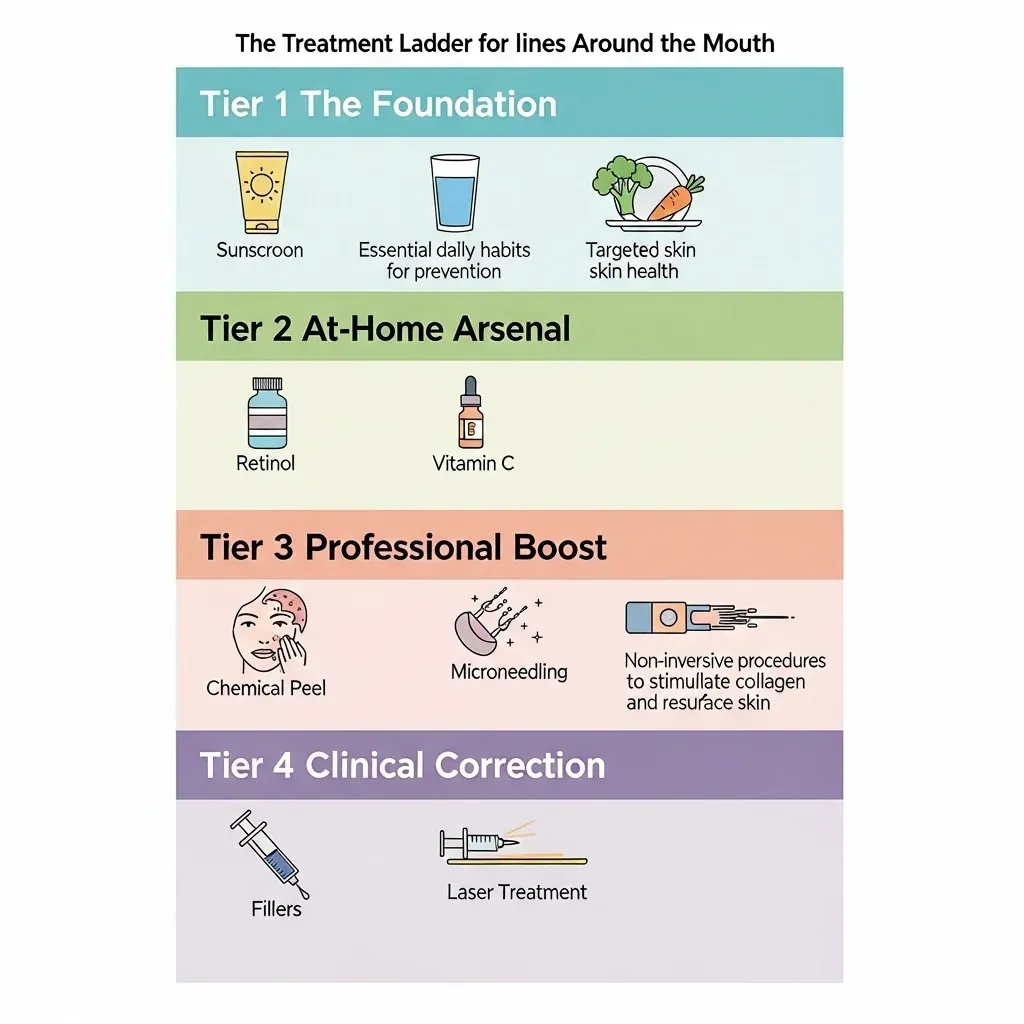
Here's your non-negotiable daily routine:
- Morning: Vitamin C serum, hyaluronic acid moisturizer, SPF 30+ sunscreen (every single day, even when it's cloudy)
- Night: Retinol serum (start with 0.25% and work up to 0.5-1%), hydrating night cream
Retinoids are the gold standard for preventing and treating fine lines. They boost collagen production and increase cell turnover. If you're just getting started, check out our guide on the power of retinol for anti-aging to understand exactly how to use it without irritation.
Reality check: You won't see results for 12-16 weeks. Most people quit at week 6. Don't be most people.
Cost: $150-300 total for a 3-month supply of quality products. That's $50-100/month—less than your coffee habit.
If You Have Prominent Smile Lines (Nasolabial Folds)
Your focus: Volume replacement and collagen stimulation.
Here's the truth: topical products won't fix deep nasolabial folds. You need to restore volume that's been lost. Your best options:
- Dermal Fillers (Hyaluronic Acid-Based)
- Results are immediate
- Cost: $600-1,200 per syringe (you might need 1-2 syringes)
- Lasts 12-18 months
- Pain: Minimal with numbing cream
- Microneedling with Radiofrequency
- Stimulates your body's natural collagen production
- Cost: $400-700 per session (need 3-4 sessions)
- Results appear gradually over 3-6 months
- More natural-looking than fillers but takes longer
Real talk: Fillers give you instant gratification. Microneedling gives you gradual, natural improvement. Many people do both—fillers for immediate volume, microneedling to improve skin quality over time. Learn more about dermal fillers for volume loss and what to expect during treatment.
If You're Bothered by Vertical "Smoker's" Lines
These are the trickiest because they're caused by repetitive muscle movement AND collagen loss.
Your multi-pronged attack:
- Prescription Retinoid (Tretinoin)
- More powerful than over-the-counter retinol
- Requires a prescription but costs as little as $25-50/month
- See results in 3-4 months
- Baby Botox
- Tiny amounts of Botox injected into the muscles around your mouth
- Prevents the repetitive movements that deepen these lines
- Cost: $200-400 per treatment
- Lasts 3-4 months
- Laser Resurfacing
- For existing deep lines
- Ablative lasers remove the top layer of damaged skin
- Cost: $1,000-2,500
- Downtime: 7-10 days of redness and peeling
- Results last 3-5 years
Combining these approaches yields the best results for perioral wrinkles. For more details on professional treatments, read about Botox for wrinkle prevention and the benefits of laser skin resurfacing.
The At-Home Device Revolution: Worth It or Waste of Money?
LED masks, microcurrent devices, and at-home microneedling tools are everywhere. Here's the reality:
LED Light Therapy Masks ($100-400):
- Do they work? Yes, but slowly. Red light stimulates collagen production.
- Reality: You need to use them 3-5 times per week for 12+ weeks to see mild improvement.
- Verdict: Worth it if you're consistent and want to support your other treatments.
Want to dive deeper? Check out our article on LED light therapy: does it really work?
Microcurrent Devices ($200-500):
- Do they work? They provide temporary tightening and toning.
- Reality: Results disappear if you stop using them. They're not fixing structural problems.
- Verdict: Good for maintenance, not transformation.
At-Home Microneedling ($30-200):
- Do they work? Only if you use 0.25-0.5mm needles (anything deeper should be done professionally).
- Reality: Professional microneedling (1.5-2mm) produces significantly better results.
- Verdict: Can enhance product absorption but won't replace professional treatments.
Busting the Biggest Myths That Are Costing You Results
Myth #1: "Facial exercises will erase my wrinkles."
Truth: Facial exercises can actually make lines worse by reinforcing repetitive movements. Focus on proven treatments for skin care and aging instead. Curious about this? Read our breakdown on facial exercises for anti-aging to understand why they're overhyped.
Myth #2: "Drinking more water will plump up my wrinkles."
Truth: Hydration is important for overall skin health, but it won't fill in existing wrinkles. You need topical hydrators (like hyaluronic acid) and treatments that rebuild collagen.
Myth #3: "Natural oils are just as good as retinol."
Truth: No natural oil has been proven in clinical studies to increase collagen production the way retinoids do. Stop wasting your money.
Myth #4: "If I stop getting fillers, my face will look worse than before."
Truth: When fillers dissolve, you simply return to your baseline. They don't make things worse. Your face continues aging naturally. If you're considering fillers, read our lip filler aftercare rules nobody told you about first.
Myth #5: "I only need sunscreen on sunny days."
Truth: UV rays penetrate clouds and windows. Wear SPF 30+ every single day. This is the single most important thing you can do.
How to Choose the Right Provider (So You Don't End Up on Instagram's Botched Account)
If you're going the professional treatment route, choosing the right provider is critical.
Your vetting checklist:
- Board certification: For injectables, choose a board-certified dermatologist or plastic surgeon. Not your friend's cousin who took a weekend course.
- Before/after portfolio: They should have extensive photos of real patients with similar concerns to yours.
- Consultation red flags: If they're pushing the most expensive option or trying to treat areas you didn't ask about, run.
- Questions to ask:
- "How many of these procedures do you perform per month?"
- "What are the potential risks and complications?"
- "What's your plan if I'm not happy with the results?"
- "Do you offer dissolver for fillers if needed?"
The Real Cost Breakdown: What You'll Actually Spend
Let's talk money because nobody else will.
Budget-Conscious Approach ($100-300/month):
- Quality retinoid: $40-80
- Vitamin C serum: $30-60
- Hyaluronic acid moisturizer: $25-40
- Broad-spectrum SPF: $15-30
- LED mask (one-time): $150-250
Total first-year investment: $1,500-2,000
Mid-Range Approach ($3,000-5,000/year):
- Everything above PLUS:
- 3-4 professional microneedling sessions: $1,200-2,400
- OR 2 rounds of chemical peels: $600-900
- Professional skincare products: $500-800
Learn more about chemical peels: what to expect and microneedling for skin rejuvenation.
Premium Approach ($6,000-10,000+/year):
- Everything above PLUS:
- Dermal fillers (1-2 syringes): $1,200-2,400
- Botox (2-3 treatments/year): $900-1,800
- Laser resurfacing: $2,000-3,000 (typically every 3-5 years)
The truth: The best results come from combining prevention (daily skincare) with strategic professional treatments. You don't need to do everything—pick what addresses your specific concerns and fits your budget.
Your Questions Answered (The Ones Nobody Else Addresses)
"Will fillers make me look puffy or unnatural?"
Only if you get too much or go to someone who doesn't understand facial anatomy. Start conservatively. You can always add more later.
"Can I get Botox and fillers at the same time?"
Yes. Many providers do both in the same appointment. Botox addresses muscle movement; fillers address volume loss. They work together.
"What happens if I stop treatments?"
You gradually return to your baseline. Your face doesn't suddenly collapse. You just continue aging naturally.
"At what age should I start using retinol?"
Mid-to-late 20s for prevention. But it's never too late to start. A 60-year-old will still see improvement.
The Bottom Line: What Actually Works
Here's what you need to remember:
- Prevention beats intervention every time. Start using retinoids and sunscreen NOW. Future you will thank present you.
- The best results come from combination therapy. Topical products + professional treatments > either one alone.
- There's no magic bullet. Anyone promising instant, permanent results without downtime is lying to you.
- Consistency matters more than perfection. Using a decent retinol every night beats using the "best" one sporadically.
- Professional treatments work, but choose your provider carefully. This is your face—don't bargain shop.
The lines around your mouth didn't appear overnight, and they won't disappear overnight either. But with the right strategy, you can absolutely see significant improvement in 3-6 months.
Start with the basics. Add professional treatments as needed. Stay consistent.
Your future face is counting on you to make the right moves today.
Now stop reading and go order that sunscreen.
FAQ — How to get rid of lines around your mouth
Short. Direct. What works—and what to skip.
Mostly time and motion. Sun breaks down collagen. Repetitive moves (smile, purse, smoke) etch creases. Volume loss in cheeks makes folds look deeper. Smoking speeds it up—quitting helps.
Control what you can daily: SPF 30+ every day and a retinoid at night. Expect 12–24 weeks for visible change. For deeper folds, in‑office options work faster: dermal fillers (6–12 months), lasers, peels, or microneedling. Pick a qualified clinician and start conservative.
Yes. Hyaluronic acid fillers add volume so folds look softer right away. Typical longevity: 6–12 months, sometimes longer depending on product and placement. Combo plans (filler + skin resurfacing) often look most natural.
Yes—for fine lines. Retinoids boost collagen and smooth texture over time. Start 2–3 nights/week, moisturize, and use SPF daily to avoid irritation. Give it 3–6 months for meaningful results.
Habits help, but they won’t replace lost volume. Wear SPF daily, stop smoking, manage weight swings, and sleep on your back. Use moisturizer and consider a gentle retinoid for skin quality. For big changes, you’ll still need in‑office treatments.

